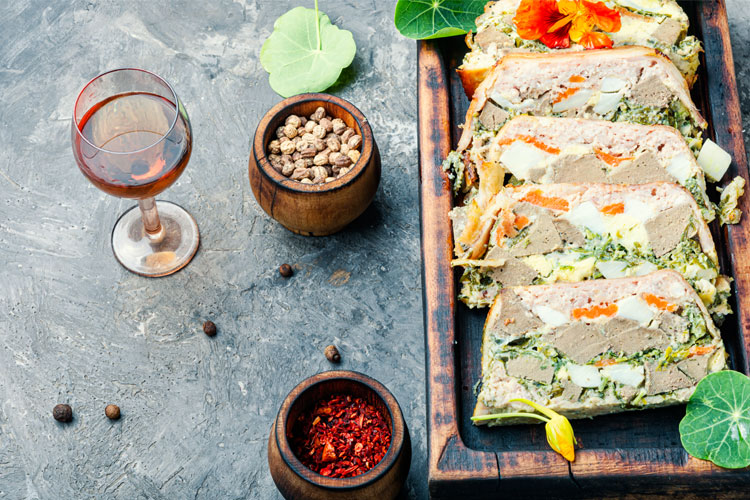

The French have surrounded food with so much commentary, learning and connoisseurship as to clothe it in the vestments of civilization itself… Cooking is viewed as a major art form: innovations are celebrated and talked about as though they were phrases in the development of a style of painting or poetry… A meal at a truly great restaurant is a sort of theatre you can eat.-Richard Bernstein, The Fragile Glory
Paris is the undisputed culinary centre of the world. For over a century & a half, fine dining has been synonymous with French dishes & French chefs have been revered around the world. A sophisticated meal, expertly prepared & elegantly served, must almost by definition be French. French cuisine is not just chic & elegantly served but is almost a supreme expression of one of the greatest arts of the world. In the new world order where regional American & International cuisines have gained popularity, the French terms like julienne, saute & chef de cuisine appear on restaurant menus from New Orleans to London to Tokyo.
French cuisine is known to be the base and the core of many Western cuisines. Also, the literature of cooking cannot be written without a large part of the modern culinary history being influenced by French chefs. The presence and acknowledgement of French cuisine is renowned and has acquired the reputation of sophistication and elegance. Techniques included in French cuisine are commonly taught in western cooking and culinary schools. French cuisine varies considerably, often only a few kilometres from town to town. We may normally break it into two, however the cuisines of Northern and Southern France. In the northern part of the nation, farms predominate and are host to healthy homemade food. To prepare some of the dishes, beer is also used here. In the southern French areas, cuisine in the Mediterranean countries is more heavily influenced by customs. The French also perfected the practice of consuming olives and using olive oil in cooking, because of their contact with them over the last century. Taking the finest of all the ingredients and mixing them in a way that retains the individual flavour of each one is by far the most characteristic of French cuisine.
In 2010, UNESCO listed French cuisine to a list of cultural objects deemed ‘intangible cultural heritage’. The strong record of French gastronomy leading to this honour is magnificent, and heritage is inspired not just by centuries of French kings and queens, but also from the surrounding and distant cultures.
French cuisine has developed over centuries of transition, both social and political. The Middle Ages hailed ornate, highly seasoned food in luxurious banquets among upper classes, whereas the French Revolution period saw a shift towards less spices and a much more extensive use of herbs.
French cuisine differs by season. Salads and fruit dishes are common in summers because they are soothing as well as the local produce is cheap and plentiful. Instead of watching them spoil in the sun, green grocers tend to sell their fruit and vegetables at lower prices if possible. Mushrooms become abundant at the end of the summer and emerge all across France in stews. The hunting season begins in September and continues through February. All kinds of wild game are consumed, mostly in very lavish dishes that honour the hunt’s accomplishment. As winter switches to spring, shellfish are at their height, and oysters appear in massive amounts in restaurants. These seasonal changes are less marked than before, but they are still observed, with the emergence of deep-freeze and the air-conditioned hypermarché. Crayfish, for instance, have a very short season and harvesting them outside of that time span is unlawful.
French cuisine still follows a thin balance between types of “haute and nouvelle”. The attention being paid to its consistency, taste and appearance is great and gives each bite a memorable moment. With French cuisine, there is just so much variation that is the most important quality it has. French cuisine is now known all over the world for its extra – sensitive and accurate presentation. By making the dregular meal and a result of an art, it held high in attention and reverence. French cuisine has undergone many changes in growth, contributing to its prestigious raport. They developed their own style of cuisine into flavourful, luxurious, and classy dishes. French cuisine is a sign of culture, craft and lifestyle. During the seventeenth century, France’s popular Haute Cuisine, literally “high cuisine” was created by a chef called “François Pierre La Varenne”. He is accredited for publishing the very first true French cookbook, as just a writer of works such as Cvisinier François. The earliest known reference to the roux using pork fat is included in his book. There were two parts in the novel, one is for meat days, and another for fasting. His recipes marked a shift from the cooking style established in the Middle Ages to modern methods aimed at making slightly lighter recipes and much more elegant displays.
French cuisine has undeniably lost some of its hegemonic power: there are just so many fascinating newcomers to the international scene of haute cuisine who have outstripped the existing slew of French chefs. However the continued popularity of French cuisine today is significant.
For example, experienced American chef Thomas Keller, who has historically been given three Michelin star ratings in two of his restaurants in the United States, primarily serves French food and has called ‘The French Laundry’ one of his most famous restaurants. It continues to be seen if French gastronomy’s reputation and mystique will survive. Who wonders what ground breaking dishes could be cooked by the new generation of French chefs?
Although many traditional recipes, both regional and national, prevail in classic French restaurants, French chefs are known for creativity and use of ingredients because they’re more plentiful or tastiest during the season. Not only is French food tasty and elegant, but for all senses, enjoying a meal in a French restaurant is a restful pleasure.
It really can take generations to master French cuisine, but French restaurants offer this creative gastronomic experience to customers worldwide. In France, the components that comprise modern cuisine each date from various times in the history of French cuisine, but they all work together to make one wonderful culinary community.

Your information will never be shared with any third party
WhatsApp us
It’s going to be end of mine day, but before end I am reading this wonderful piece of writing
to improve my experience.